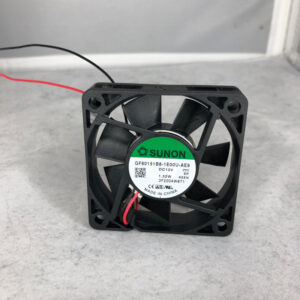 In this article, Gelec helps buyers purchase fans which are technically up to the job, without overspending.
In this article, Gelec helps buyers purchase fans which are technically up to the job, without overspending.
A common requirement for fans is low noise, especially for applications located near people such as in offices or homes. Selecting the correct fan bearing is key to minimising noise levels.
The low cost choice is usually a sleeve bearing, which initially should offer low noise levels. However, after time, due to the nature of the bearing, the fan will become gradually noisier. It is worth noting that the noise rating on the datasheet may not be the real-life noise level after hours of operation. There is also the general opinion that sleeve bearings should only be mounted vertically (blowing air horizontally) otherwise there is risk of early failure.
Ball bearings are at the costlier end and generally regarded as a more robust choice. A ball bearing is preferred for high end applications requiring faster speeds (higher airflow), longer life expectancy and freedom to mount in all orientations. However, ball bearings are not the lowest noise option.
If low noise is the target, alternate bearings are available. One example is Sunon’s patented, near frictionless MagLev bearing system. A key feature of this bearing design is a magnetic plate which removes contact between the impeller and bearing wall. This versatile bearing offers life expectancy closer to a ball bearing, at a cost closer to a sleeve.
Another factor is space. The general recommendation is to use the largest frame size at the lowest speed, which should minimise noise at a given airflow, plus prolong fan life.
If the application is located in a harsh environment, added levels of protection should be considered. These can start from IP21 conformal coatings to protect from moisture, all the way to fully enclosed IP68 rated fans which are submersible in water. Sunon also offers environment specific protection, such as GR47 salt fog for marine applications.
If the correct protection level is not considered, the fan’s life expectancy will be compromised. A common issue is dust impregnating the bearing, mixing with the lubricating oils and congealing into a sludge which reduces the fan speed and eventually stops rotation. If fan failure is a concern, most are now available with additional wires for tacho feedback or locked rotor detection.
As protection level increases, so does cost. Finding the correct balance between sufficient protection without over-specifying the fan can usually be best achieved with transparency and discussion with the supplier. Working with an official distributor who has direct access to the manufacturer and can offer support on design and selection should help to avoid unwanted servicing or replacement costs down the line.
